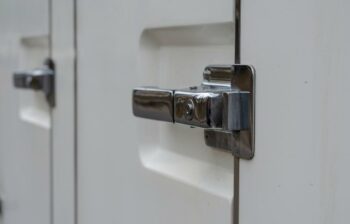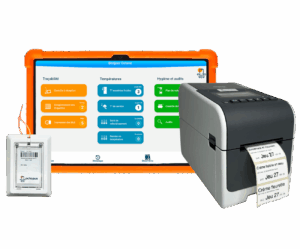Record your fridge temperatures with Octopus HACCP!
Températures
⏳ Temps de lecture : 5 min
? Mis à jour le : 28/10/2024
Fridge Temperature Logs: The Importance of Cold Chain Compliance ❄️
This means your goods and food preparations must be stored at temperatures that ensure proper preservation.
Why is it necessary to record fridge temperatures?
To ensure goods are stored at the correct temperature, the best method is to monitor the temperature of the fridges where they are kept.
This temperature monitoring is a regulatory requirement. It must be done for all cold storage units in your facility: cold rooms, refrigerated counters, display cases, freezers, etc. During hygiene inspections, the auditor will request your fridge temperature logs. ❄️
It is recommended to keep your temperature records for 1 year. ?
How to record fridge temperatures?
To measure your fridge temperature, you have 3 options:
- Place a small thermometer inside your cold storage unit and check the displayed temperature. Note: this thermometer must be in working order and calibrated regularly (at least once a year) to ensure its accuracy (e.g., 0°C reading corresponds to actual 0°C).
- Use a laser thermometer and scan your cold storage units by measuring the temperature of a product inside each unit.
- Equip your cold storage units with automatic temperature sensors that continuously monitor temperatures and alert you in case of issues. ✅
Hygiene inspectors will ask you to place a small control thermometer in each cold room.
How to record my fridge temperature logs?
If you do manual temperature checks, you can record your temperatures on a proper log sheet. You can download our free temperature guide to get your printable temperature log PDF sheets. ?
If you’re tired of loose papers in your kitchen, you can also use the Octopus HACCP app which lets you perform temperature checks directly from your mobile, and alerts you in case of abnormal temperatures. Your temperature records are kept for the required regulatory period, completely paper-free! ?
If you really want to save time, you can equip your cold storage units (both chilled and frozen) with Octopus HACCP’s temperature sensors. These wireless sensors take readings every 10 minutes and send SMS and email alerts in case of temperature deviations. This way your logs are automatically archived, you don’t need to enter them manually, and you save valuable time. ?
When should I perform my fridge temperature checks?
It is essential to check your fridge temperatures before starting production.
If a power outage occurred during the night and the goods stored in your cold storage units exceeded the maximum storage temperature for over an hour, you will need to discard them. ⚠️
We recommend establishing a routine for your team: each morning, designate someone to check the temperature of all cold storage units before production begins.
It is also good practice to check the units after service to ensure all doors are properly closed and temperatures remain within the safe range. ✅
What are the recommended fridge temperatures? ❄️
The appropriate temperature for each cold storage unit depends on what you’re storing.
For received goods—whether raw or packaged—you should follow the manufacturer’s recommendations. In most cases, the recommended storage temperature is between 0°C and 4°C.
For foods you prepare yourself, the temperature should be kept between 0°C and 3°C maximum.
Highly perishable items such as minced meat or fresh fish must not exceed 2°C.
Some products have specific requirements—such as cheeses that need to mature, or fruits and vegetables, which can be stored at temperatures up to 8°C.
Want to learn more about safe storage temperatures? Follow this guide!




